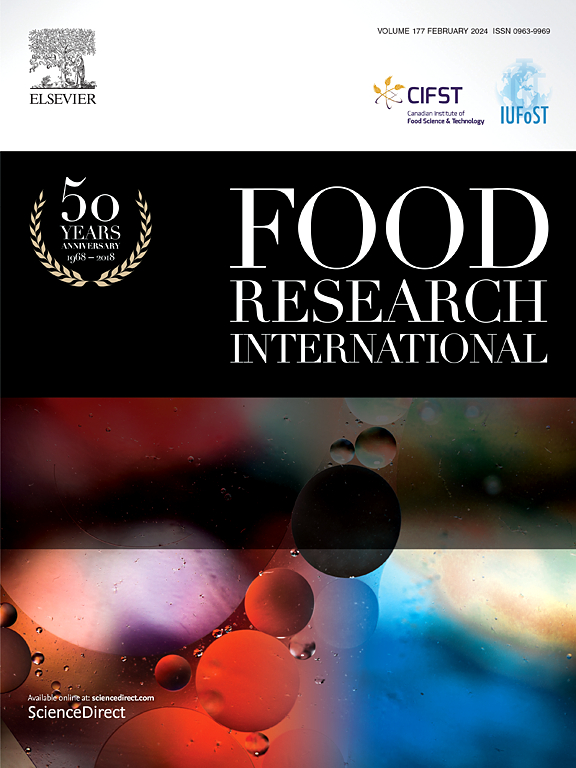Integrated microbiome and metabolomics analysis of spoilage characteristics of modified atmosphere packaged pork
IF 7
1区 农林科学
Q1 FOOD SCIENCE & TECHNOLOGY
引用次数: 0
Abstract
The interactions between pork microbial communities and metabolites in modified atmosphere packaged (MAP) storage remain unclear. This study exposed the core microbial communities and metabolite profiles during refrigerated pork storage under MAP and illuminated the relationship between them by high-throughput sequencing and non-targeted metabolomics to comprehend the spoilage mechanism induced by microbial activity in MAP pork during storage. The results showed that Pseudomonas and Serratia were the predominant spoilage bacteria in the preliminary stages of refrigerated pork, while Brochothrix gradually dominated in the final stages of storage. 76 differential metabolites were identified from 822 metabolites, consisting of small-molecule metabolites including glycerophospholipids, bitter amino acids, amines, and nucleotides. The metabolic pathways involved in these metabolites were 10 metabolic pathways inclusive of purine metabolism, nucleotide metabolism, and glycerophospholipid metabolism. Correlation results revealed that bacterial genera like Pseudomonas, Brochothrix, Stenotrophomonas, Acinetobacter, and Aeromonas were significantly correlated with metabolites such as lipids, organic acids and nucleotides. These findings enhance our understanding of the spoilage mechanism of refrigerated pork stored in MAP.

气调包装猪肉腐败特性的微生物组学和代谢组学综合分析
改良气调包装(MAP)储存中猪肉微生物群落与代谢物之间的相互作用尚不清楚。本研究通过高通量测序和非靶向代谢组学分析,揭示了MAP冷藏猪肉在贮藏过程中的核心微生物群落和代谢物谱,阐明了它们之间的关系,以了解MAP冷藏猪肉在贮藏过程中微生物活性引起的腐败机制。结果表明:在冷藏猪肉的前期,以假单胞菌和沙雷氏菌为主要腐败菌,而在冷藏猪肉的后期,则逐渐成为主要腐败菌。从822种代谢物中鉴定出76种差异代谢物,包括小分子代谢物,包括甘油磷脂、苦味氨基酸、胺和核苷酸。这些代谢物所涉及的代谢途径包括嘌呤代谢、核苷酸代谢和甘油磷脂代谢等10种代谢途径。相关结果显示,假单胞菌、Brochothrix、窄养单胞菌、不动杆菌和气单胞菌等细菌属与脂质、有机酸和核苷酸等代谢物显著相关。这些发现增强了我们对MAP冷藏猪肉腐败机制的认识。
本文章由计算机程序翻译,如有差异,请以英文原文为准。
求助全文
约1分钟内获得全文
求助全文
来源期刊

Food Research International
工程技术-食品科技
CiteScore
12.50
自引率
7.40%
发文量
1183
审稿时长
79 days
期刊介绍:
Food Research International serves as a rapid dissemination platform for significant and impactful research in food science, technology, engineering, and nutrition. The journal focuses on publishing novel, high-quality, and high-impact review papers, original research papers, and letters to the editors across various disciplines in the science and technology of food. Additionally, it follows a policy of publishing special issues on topical and emergent subjects in food research or related areas. Selected, peer-reviewed papers from scientific meetings, workshops, and conferences on the science, technology, and engineering of foods are also featured in special issues.
 求助内容:
求助内容: 应助结果提醒方式:
应助结果提醒方式:


